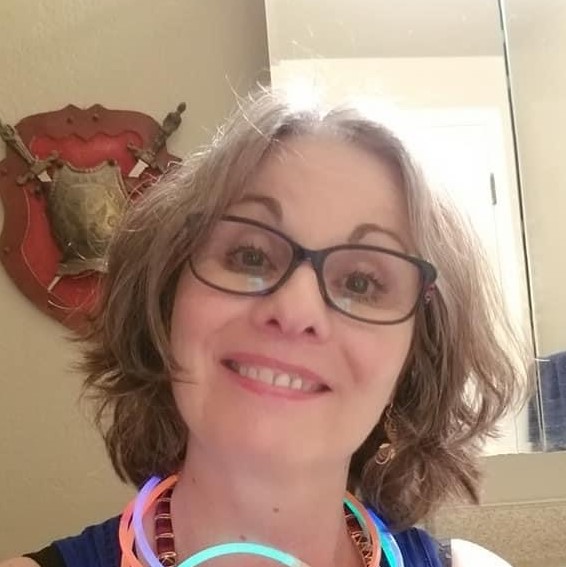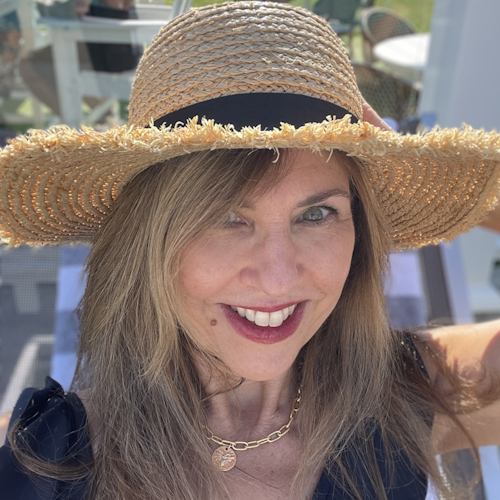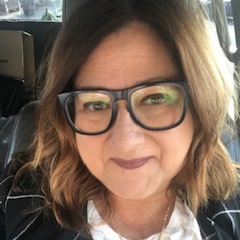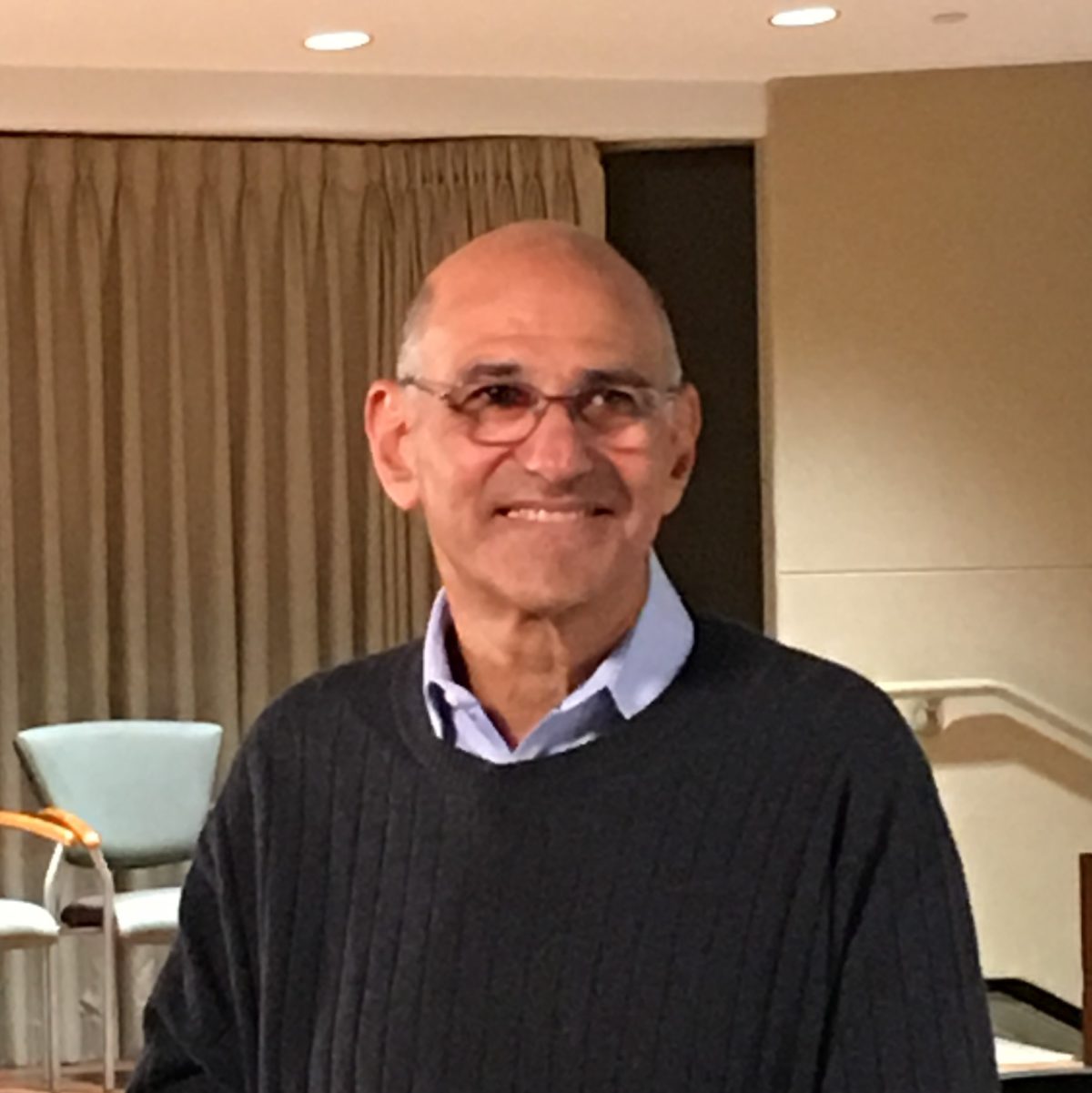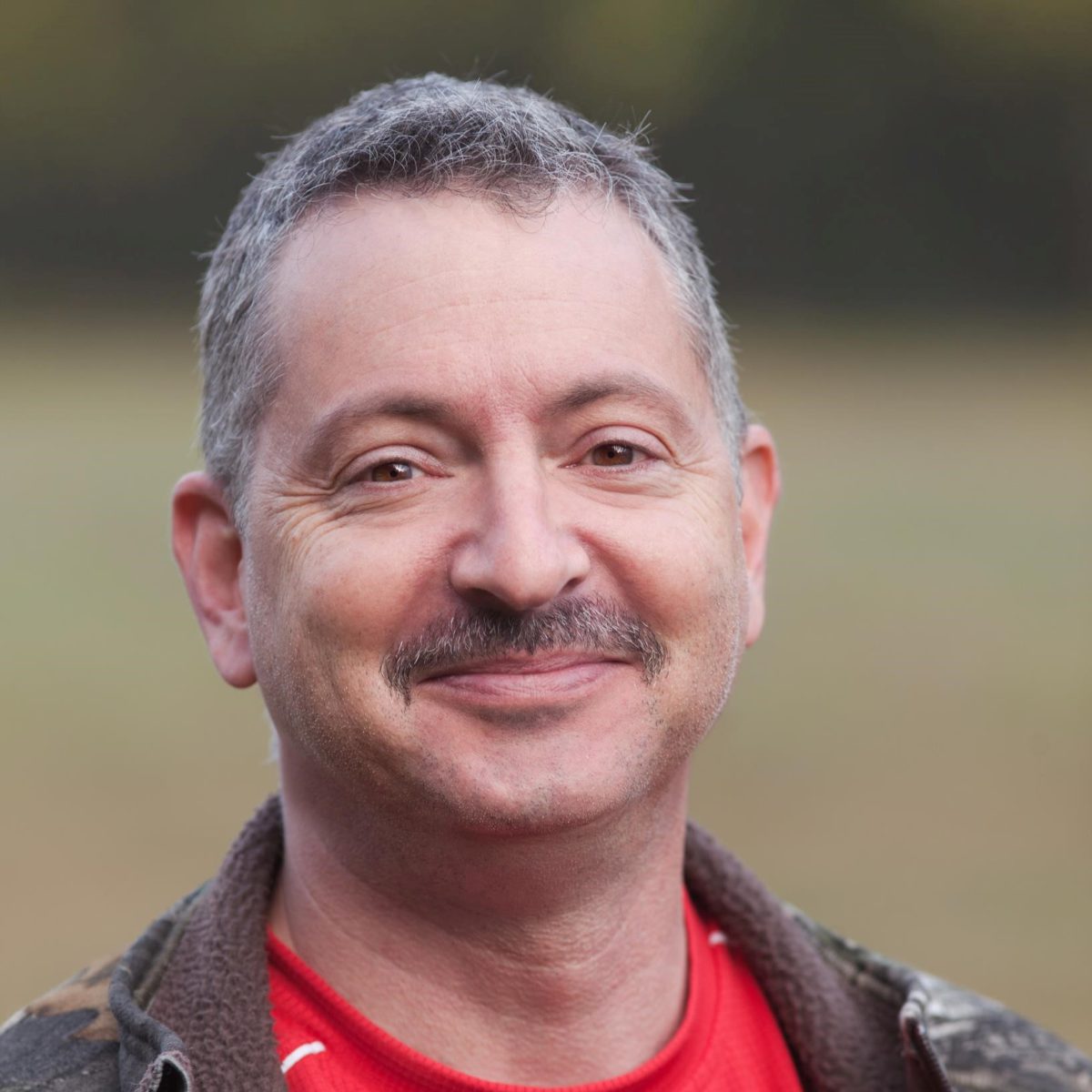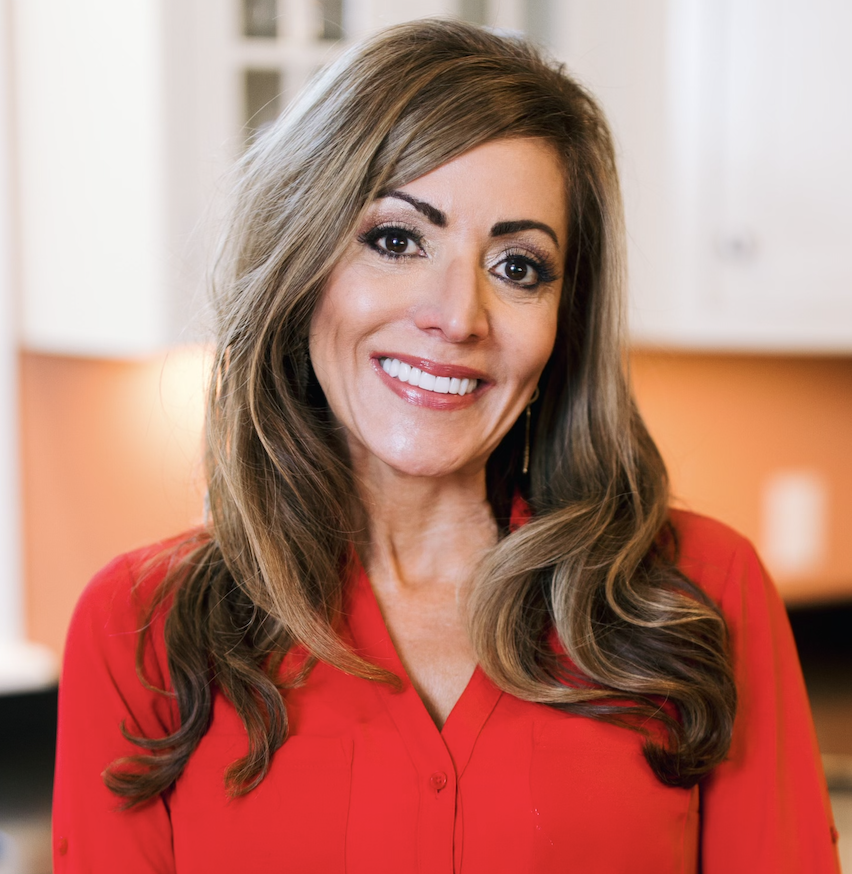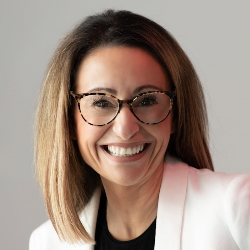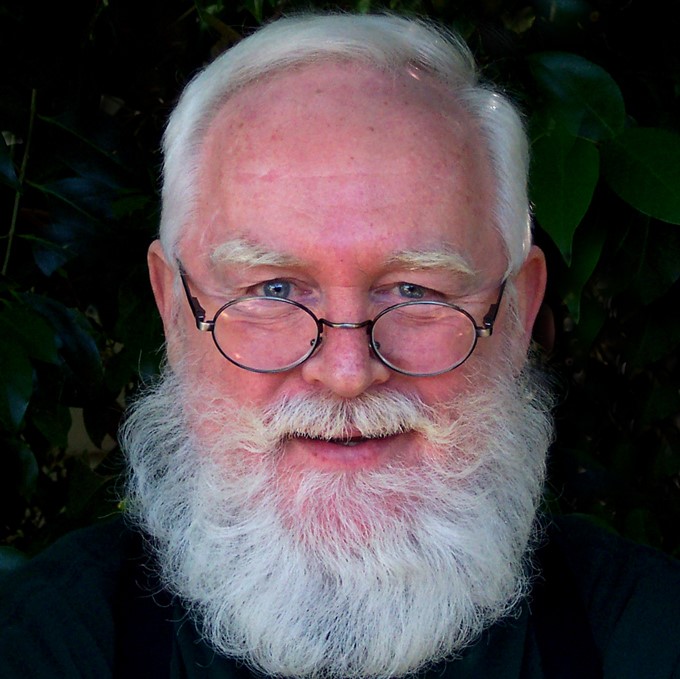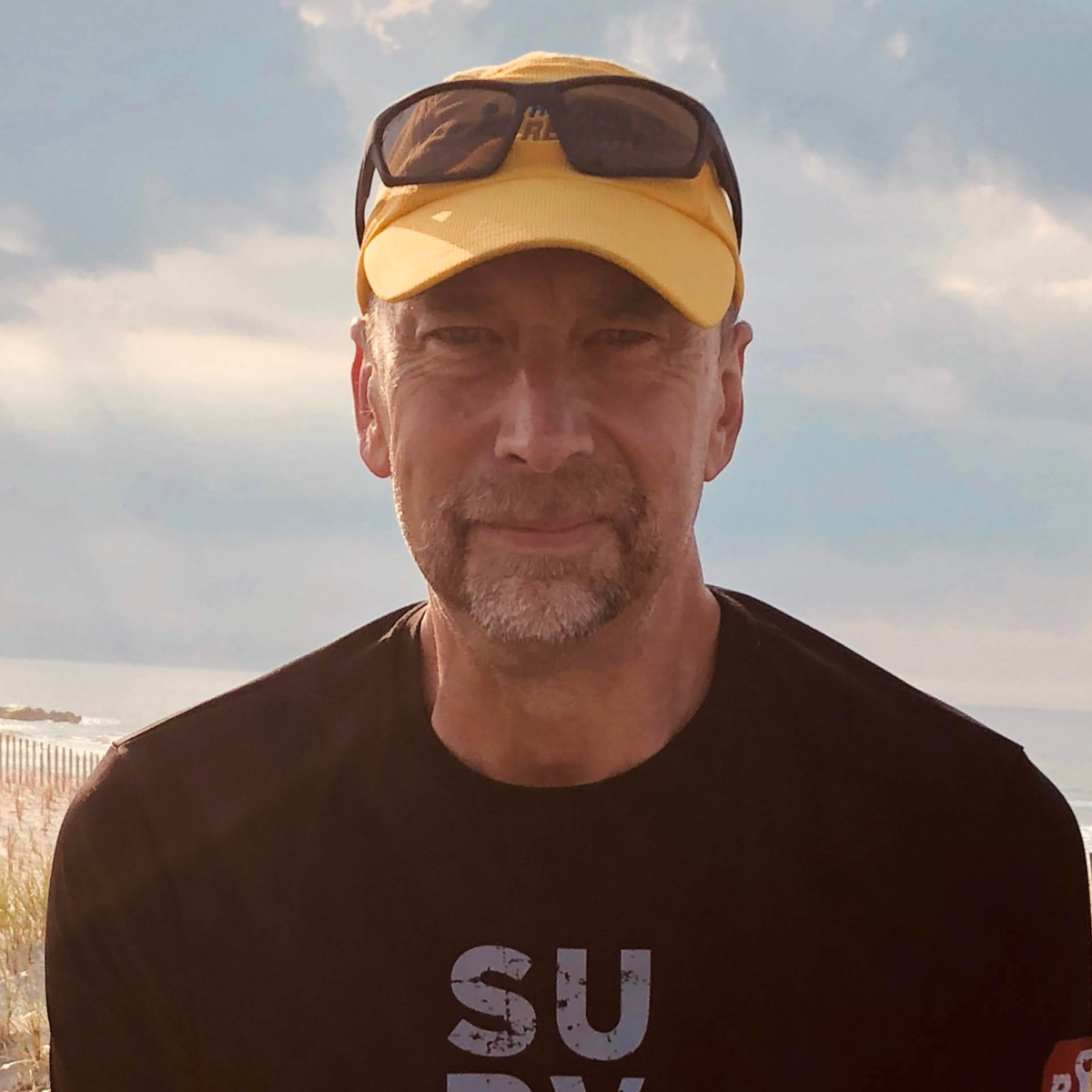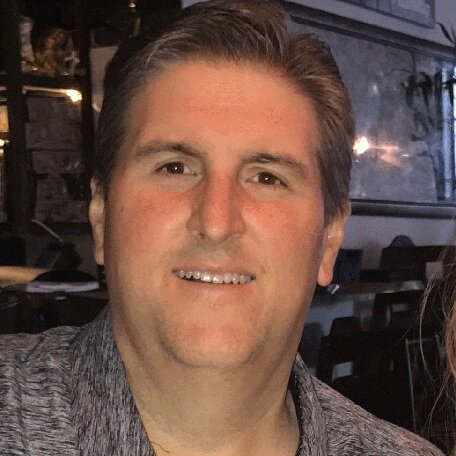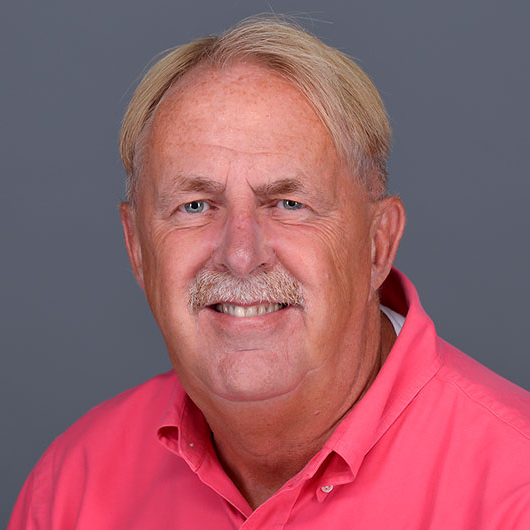Leesa’s Chronic Lymphocytic Leukemia (CLL) Story

Leesa received an unexpected cancer diagnosis of chronic lymphocytic leukemia (CLL) after a routine physical.
She was put on watch and wait for a decade before starting treatment due to worsening symptoms. These included fatigue, dizziness, infections and ocular disease. Leesa was put on ibrutinib and later switched to zanubrutinib.
Now, 14 years after diagnosis, Leesa reflects on her journey and making the most of the time she has.
Thank you for sharing your story, Leesa!
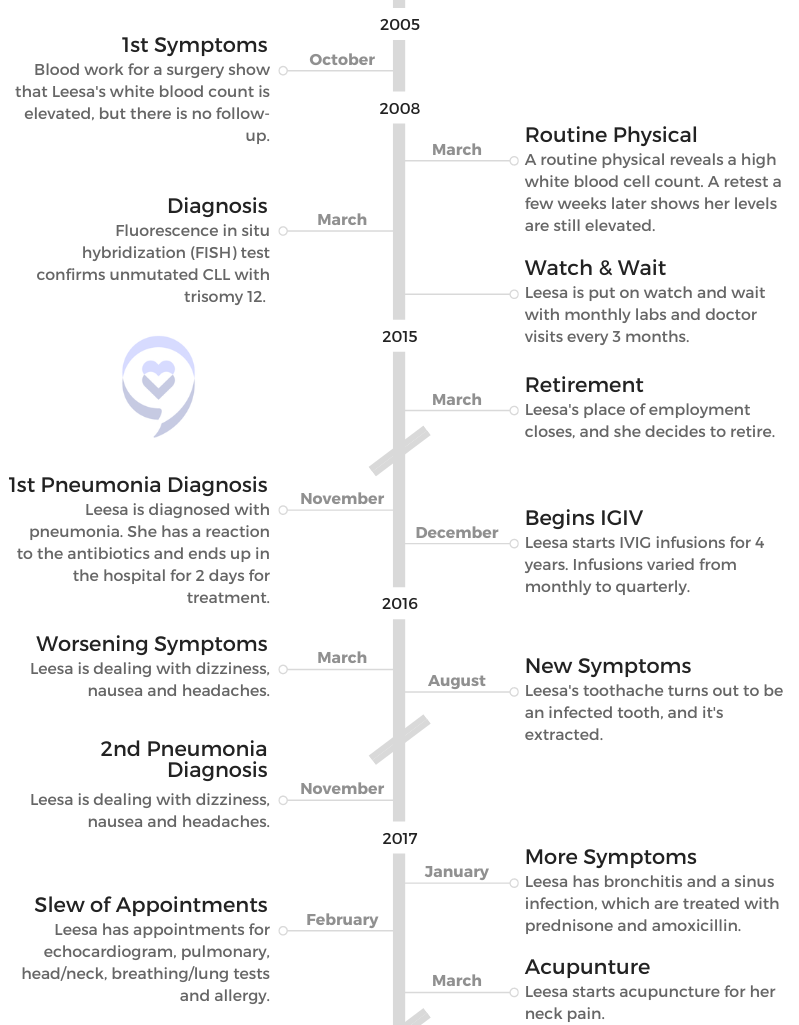
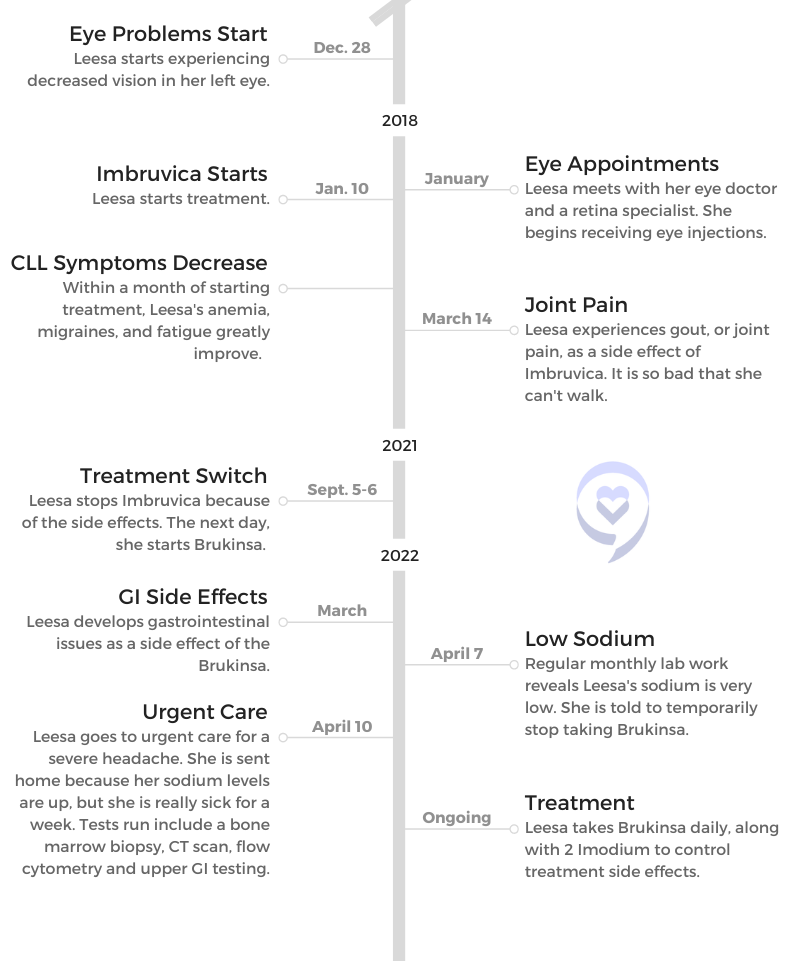
- Name: Leesa T.
- Diagnosis:
- Non-Hodgkin’s lymphoma
- Subtype: Chronic lymphocytic leukemia (CLL)
- Trisomy 12 unmutated
- 1st Symptoms:
- Bruising, but she didn’t realize until after diagnosis
- Tests for CLL Diagnosis:
- Blood work
- FISH test
- Treatment:
- 10 years of watch and wait
- Imbruvica (ibrutinib)
- Brukinsa (zanubrutinib)
- Side Effect Treatment:
- Eye injections
- Imodium (for GI issues)
- Chronic Lymphocytic Leukemia Diagnosis
- Watch & Wait and CLL Symptoms
- CLL Treatment and Side Effects
- Starting Treatment after Watch & Wait
- Treatment Side Effects
- Treatment side effects and low-purine diet
- Why did you decide not to take the gout medicine?
- What worked for side effects?
- Did you or your doctor make the decision to go off ibrutinib?
- Did Kaiser take care of the insurance and financial side of things?
- Zanubrutinib side effects
- Going to the ER for side effects
- Dealing with diarrhea
- Figuring out how to manage side effects and live life
- Reflections
- More CLL Stories
This interview has been edited for clarity. This is not medical advice. Please consult with your healthcare provider for treatment decisions.
Chronic Lymphocytic Leukemia Diagnosis
Introduction
Tell me about yourself
I like doing puzzles. I like animals, especially cats. I’m married. I live in California and have been retired about 7 years now. I love to travel, although that has been curtailed. Mostly long trips, but I’ve done a few short things. I love my lunch dates with my girlfriends, and that’s me.
I have 4 cats. They’re all seniors, so Dancer and Delilah are 17, and Sammy and Bella are turning 14 on Thursday.
It was really a fantastic distraction for me. You need something bright in your life, and I feel like they were sent to me to help me.

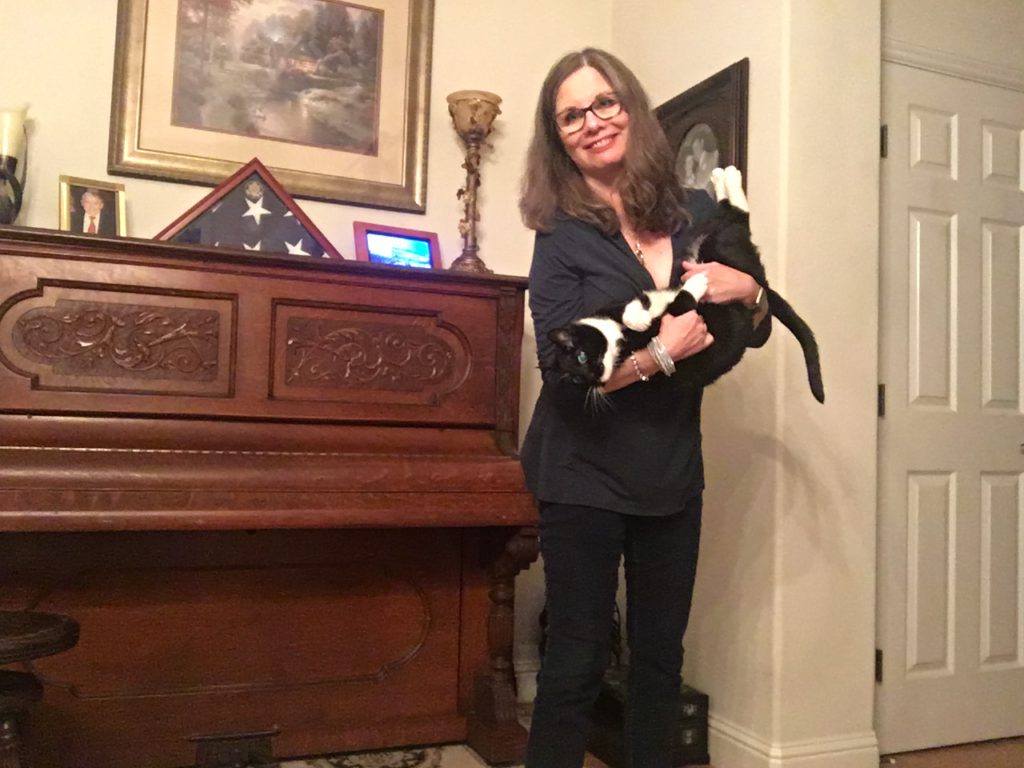
The CLL Diagnosis
You didn’t really have symptoms, so how did the testing and diagnosis process begin in 2008?
I switched insurance, and I decided I’ll have a physical since with this insurance, that’s covered. When my results came back, my doctor said, “Your white blood count is high. Have you been feeling sick?”
I said, “No, I feel great.”
She said, “Then retest in a few weeks,” and I tested again. She said, “Your white blood count is high again. I’m referring your case to a hematologist-oncologist.”
It just floored me. My husband thought that just must be a mistake. You’re healthy; that can’t be true. More blood tests were done. An appointment with hematologist-oncologists and tests confirmed that it was indeed CLL.


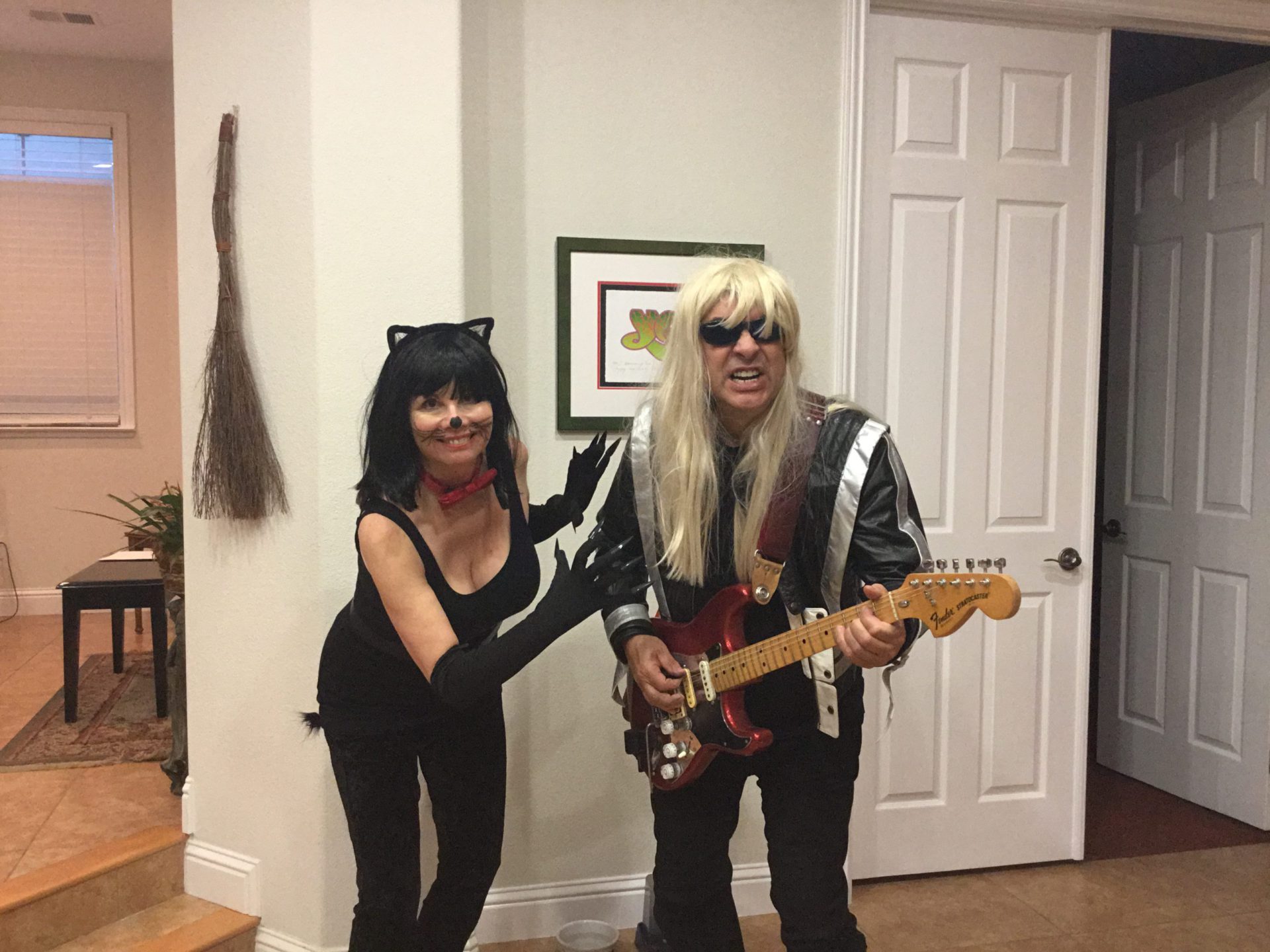
How did you process thinking it might be cancer?
Mostly just shock, and it felt like it was just surreal. This can’t really be happening, and I’m going to die. Those thoughts come in your head. “I’m going to die.”
»MORE: Patients share how they processed a cancer diagnosis
What tests did your hematologist-oncologist do?
He’s a hematologist-oncologist, not a CLL specialist. I’m very fortunate in that he’s extremely knowledgeable about CLL.
I had heard of CLL because of my aunt, and she described it. She came from Texas to visit. She described it as, ‘It’s not the kind of cancer that’s going to kill you.’
First off, various types of blood tests. We’ll add all these others on. The other test I had some months later, as I remember, was a bone marrow biopsy, which he was trying to do in his office. I could not tolerate the pain, so that was put off for a time when I could be in a hospital setting and they could give me some sedation. Those were the main tests that I had to get the diagnosis.
[The FISH test revealed it] was trisomy 12 unmutated, which my oncologist said was a moderate progression. It’s not the slowest-growing CLL, and it’s not the fastest-growing. That diagnosis is kind of in the middle.

Processing the CLL diagnosis
Figuring out the path of living with chronic cancer
He told me right away that you’ll be on watch and wait, with having your blood tested about every 3 months and visits with him the same. I think he kind of erred on the side of caution and always has seen me more frequently even than I think some specialists see their patients. That was our course of action.

I had heard of CLL because my aunt, my father’s sister, had CLL, and my dad’s mother, my grandmother, I believe also had CLL. All we knew was she had leukemia, but she lived to be 94 and she was diagnosed late in age. I had heard of CLL because of my aunt, and she described it. She came from Texas to visit. She described it as, “It’s not the kind of cancer that’s going to kill you.”
I never thought I would ever say that I’ve had CLL for 14 years when I was first diagnosed. When I was first diagnosed, I thought I only had a few more years to live.
I think she had actually passed before I was diagnosed, so I couldn’t really give her a call and ask about her experience. But her experience would have been different, because the only drug they had to treat it in 2008 when I was diagnosed was chemo. That’s right when the BTK inhibitors and other drugs were coming out.
She had told me that she was not going to do chemo, and that was her only option at the time. Now, we also know that for people who are unmutated like me, chemo doesn’t work for them very long. It has a very short duration, so I’m really grateful that all these new drugs are available for me.
Processing the CLL diagnosis and breaking the news
I told my husband, and he was just as shocked as me. He cried. I did not tell my father, who was in his late eighties and had mild dementia. I knew that he did not process bad information well, so I chose not to talk to him about it, which is very difficult. You want to be able to share with your [family].
I didn’t have my mother anymore, and I really wanted to share with him, but I knew that for me and for him, that was the best thing to do. I told my good friends. It’s difficult for people to understand this type of cancer and the whole watch and wait thing. My friends were extremely supportive.

A lot of ways it was a blessing, because it taught me, ‘Do not put these fun things off. Do it all now.’
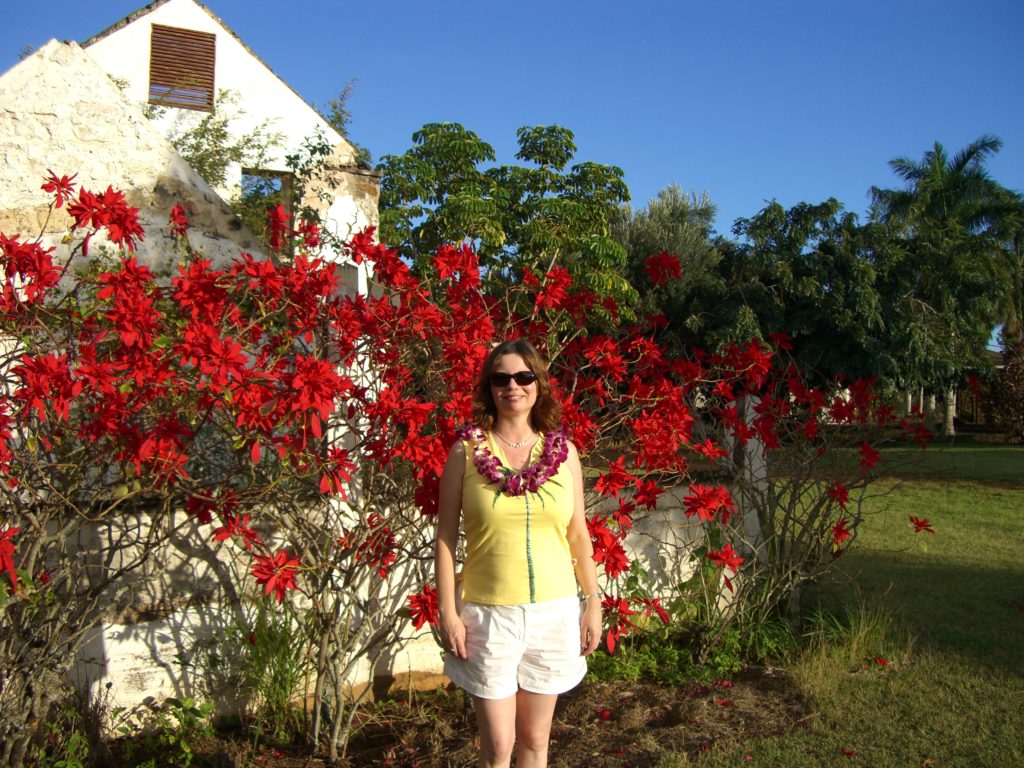
I’ll just say that for the first 6 or 8 months, I really felt like I was just in a complete fog, just going through the motions of life. I’m usually a pretty positive person, but it just knocked me over, and it took me a really long time to wrap my head around it.
Now it’s just part of my life, 14 years later. I never thought I would ever say that I’ve had CLL for 14 years when I was first diagnosed. When I was first diagnosed, I thought I only had a few more years to live.
»MORE: Breaking the news of a diagnosis to loved ones
Living life to the fullest
A lot of ways it was a blessing, because it taught me, “Do not put these fun things off. Do it all now.” There was a trip my best friend asked me to go on with her sister and a friend to the beach, a very expensive place on the beach with massages included and expensive dinners.
I had just bought a new house with my new husband. I’d be like, “That’s just an extravagant, expensive weekend. I can’t do that.” The diagnosis made me say, “I’m going, I can do it. It’s not really that big of a deal.”
There were a lot of moments like that, but that one really stands out in my mind. You just have to put it behind you and enjoy all the days. It’s just something that switches within your own brain.
What support is important from people in your life?
I think you’ll find out pretty early on who’s able to kind of understand it and be supportive to you, and who’s not. Sadly, it doesn’t mean they’re a bad person or anything. They might want to try to sell you this product that they sell. “This is amazing, and it’s going to get rid of your cancer.” They might say, “You should go on this kind of diet,” or that kind of thing. The people who just don’t understand say, “Well, my aunt had it, and she lived to be 90,” or that kind of thing.
You find your people, and they might surprise you who they are and who they aren’t. You just need a couple of supportive people in your life, even one supportive friend or family member, and you go to them.

How the Cancer Could Have Been Caught Earlier
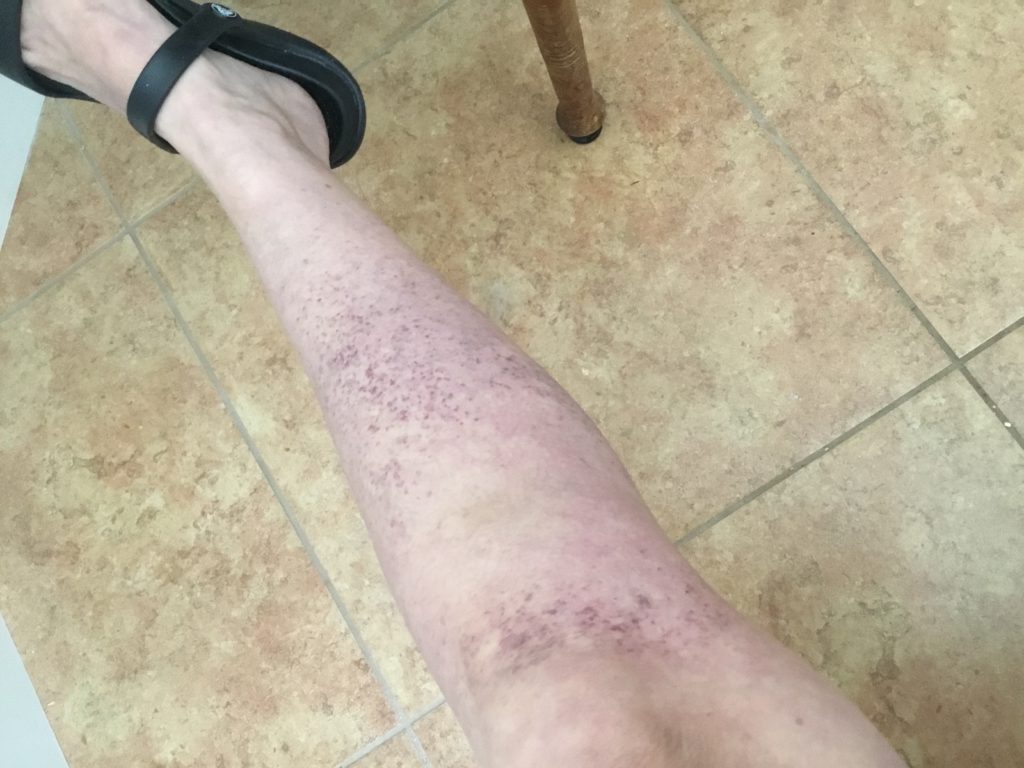
Pulling records from 3 years earlier
My oncologist said, “You probably have had this for a while. See if you can pull some records.” I contacted my doctor’s office, and they faxed the information to me. I’m like, “Wow, he’s right. There it is.”
I had been living with it for at least 3 years, and I suspect a couple of years before that, based on just a couple little minor changes. I started bruising very easily in my early 40s. When my husband first met me, he said, “You’re like a banana,” because I always had maybe about 20 bruises on my legs at any given time. I had to hold my shopping bags out to the side because if they touched my leg, I would bruise.
In retrospect, I should have known, but I was just like, “That’s just me. I’ve been like this for a while.” But it’s definitely a sign.
How do you feel knowing it could have been caught earlier?
When I wracked my brain thinking back to that time, after I got my records, I had this vague memory of the nurse before my surgery — who saw my labs — asking me if I had been sick. That’s a common sign. When your white blood count is high, you’re sick or have an infection.
I said, “No,” and she said, “When your surgery is all said and done and you’re feeling better, you should actually have that checked out or redo your labs.” I totally forgot it, having gone through surgery and recovery for 6 weeks.



I wonder why [my doctor that I really liked] didn’t point it out to me and remind me, because I continued to see him. That should have been a red flag for him to bring that up 6 months later when I saw him, or even while I saw him during recovery. The nurse [should have] called me for a follow-up. But they were not oncologists, and they’re busy.
Watch & Wait and CLL Symptoms
Being Put on Watch and Wait
Reacting to not needing treatment right away
My first reaction is different than a lot of people. A lot of people want it fixed right now, but not me. I’m like, “Oh, thank God, I don’t have to do chemo right now. Watch and wait? I can do that.” That’s how I felt about it.
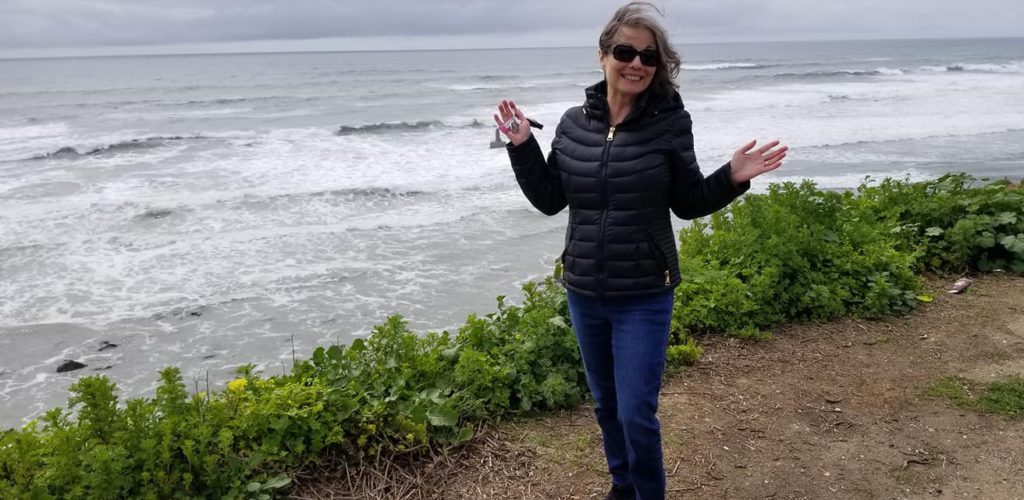
I realized I didn’t know I felt so bad until I started feeling better.
I just saw him about every 3 months, had my labs done, had a CT scan to get a baseline on swelling of my lymph nodes and other organs that might be affected. That’s fine with me. I want to be on watch and wait for the rest of my life. I never want treatment. That was my thought. Treatment was horrible. That was my thought. But it’s really not.

Did your aunt having CLL make watch and wait less foreign to you?
I did understand that there was this period where it wasn’t going to take her life right away, and she was just living with it, and she was tired. That’s what I knew. She was in another state.
What’s your advice for dealing with watch and wait?
Just try to relax, enjoy it, learn what you can about CLL from reliable sources. Support groups are fantastic. It can be scary, too, in a support group, hearing other people’s stories. I sometimes even felt some guilt because people were so sick.
Here I was working full-time, taking care of my elderly dad’s needs, having fun, living a completely normal life. Granted, when I look back — especially as it neared my 10-year mark when I did need treatment — I was really so sick. When I finally started treatment, I realized how many times I felt so horrible and how much better I felt once I did start treatment.
I had gotten used to feeling bad, used to having these flu-like symptoms, with no clue why and just kind of still carrying on with life the best I could — working, doing everything around the house, living normally within those bounds.
Once I started treatment, of course there are side effects and I had them, but I felt so much better. I realized I didn’t know I felt so bad until I started feeling better.


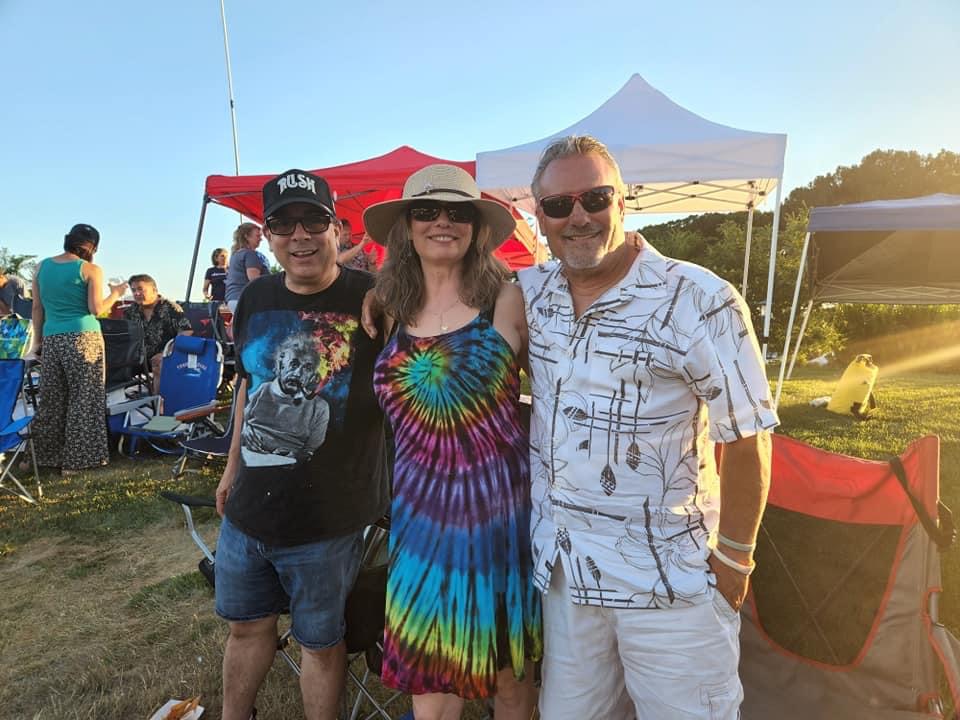
Worsening Symptoms
Symptoms from November 2015 to December 2017
Dizziness, headaches, nausea, pain on the head, tooth pain that was an infected tooth, pneumonia more than once, bronchitis, sinus infection, pain throughout body, including muscle pain, some arthritis, then at the end of it, vertigo and near blindness in left eye.
I don’t know how I did it. I don’t know how I did it, but you just do. You realize how strong you are when you don’t think you are, and I hope to not have to do that again.
How did you juggle all the doctor’s appointments?
It was difficult. In 2016, the company I was working for closed in the spring, and that coincided with my health just taking a turn for the worst. Thankfully, I was not working. There was one week that I had 7 doctor appointments, but they weren’t all for me. I believe 5 were for me, 1 or 2 were for my dad, and I had to take the cat to the vet.
My whole week was consumed with doctor appointments. I was retired before my husband, and he would say, “What do you do all day? Don’t you get bored? Do you get bored?” “Never.” It was a busy time with appointments and sickness.
Ocular Disease
How did it start?
Especially at the end, I would say those last couple of years, my oncologist had mentioned several times, “I think it’s about time starting treatment.” I was kind of digging my heels in. I was supposed to start in the fall, and I said, “I want to wait until after Christmas.” I kind of wish I didn’t, because that’s when my whole eye thing started.
It was after Christmas. It was actually December 28th. I was in a restaurant, waiting for my friend to have lunch. I was very early because I had been at some kind of doctor appointment.

I’m waiting at the table, looking towards the door for when she comes in so I can wave and flag her to the table, and it was blurry. I kept taking my glasses off and looking at them, then putting them on and looking at the door. I just wasn’t seeing clearly. My friend came. We had lunch.
The next day, it was worse. I think on the 30th, my husband and I went for a walk, and I had on sunglasses. I did the same thing, kept taking them on and off. “What’s wrong with these?” Holding them up, I told my husband, “It feels like I’m like blind in my left eye or going blind.”

‘Nothing we can do, or anybody can do.’
If you don’t get answers or you don’t like the answers from one doctor, go to another one. Don’t just take their word for it.
Seeing the doctor
He goes, “Well, you better go to the eye doctor.” Here it is, the end of December [around] New Year’s. There were not a lot of doctors working. I was able to get in January 2nd, and the eye doctor confirmed that I had swelling and such in my eye.
That doctor said, “There’s really not a lot I can do or anybody can do. Just follow up with your regular eye doctor in a few weeks.” I don’t remember if it was that doctor or a different doctor that also ordered an MRI. I did have an MRI.
This was all happening so fast that my vision was changing daily for the worse. I made a follow-up with my doctor, and they were like, “You can’t get in for a week.” I’m like, “No, no, no, I have to get in.” I did get in, and that eye doctor didn’t say, “There’s nothing you can do.” That eye doctor said, “If it were my eye, I would see a retina specialist as soon as possible.” He gave me the information.
What did it feel like being told no one could do anything?
“Nothing we can do, or anybody can do.” This is something people should take away from this. If you don’t get answers or you don’t like the answers from one doctor, go to another one. Don’t just take their word for it. They’re a trained professional with a degree on the wall. No. Speak out for yourself.
Thankfully, that second doctor right away was very concerned. He said, “If it were me, I would see a retina specialist ASAP,” because there wasn’t anything he could do. Only a specialist could work with me. It was within a couple of days, and again I was on the phone saying, “No, I can’t wait a week or 3 weeks or whatever it was. I need to get in now.”
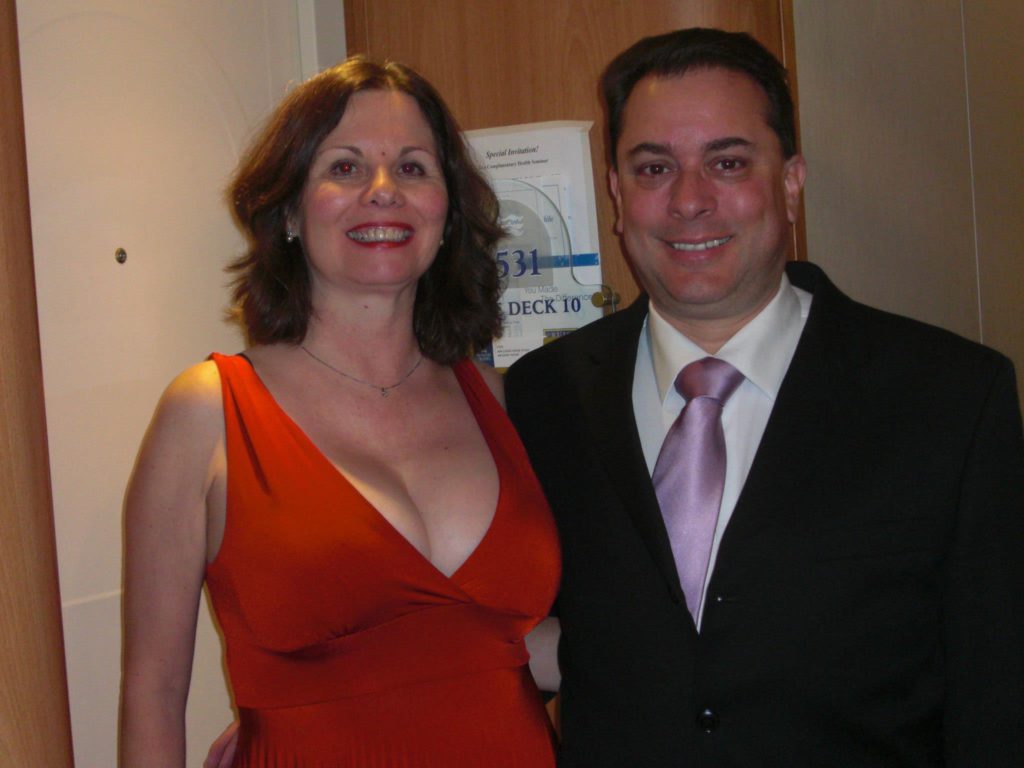
Seeing the retina specialist
My husband had to drive me, and it was about a half an hour away. [They] dilated my eyes. He did the test and showed me my eye on a graph on his computer with all the swelling and damage and ridges. He said that he suggested eye injections. I believe it’s a type of chemo medication.
Nobody wants to hear “eye injections,” but when you are going blind, you’re like, “Bring it on. Give me that injection. Start it now.” It wasn’t pleasant, but it certainly wasn’t the worst thing in the world. I ended up seeing him every few weeks and always had to have a driver because I really couldn’t even see after.
I’d get a headache. I’d be walking out holding on to my husband, really in rough shape. [I’d use] the hat and the magazine to block the sun in the car all the way home. Sometimes he’d hit a blood spot, and it would be bright, bloody red. My husband said, “You look like a demon in that eye.”
What was the eye injection process?
They put the numbing drops in. I think he might have done a numbing injection, too, before he put the medicine in. The needles are very small, and it’s not that painful. What hurt me the most was once the medicine was in there, it was stinging. It would give me a headache and stinging — the stinging for a half an hour afterwards, and headache for an hour or so. Not horrible that you couldn’t tolerate.
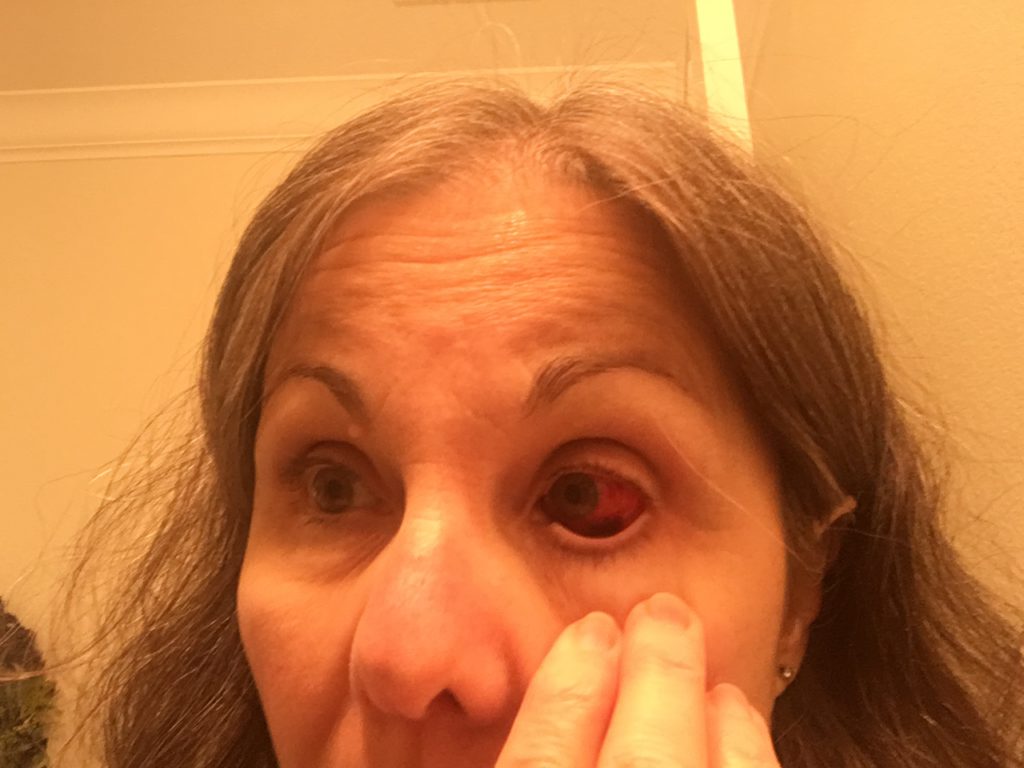
[I got the injection] every few weeks. Again, this was the beginning of 2018 when that happened. Every few weeks turned into like, “From 4 weeks, let’s go 6 weeks. See you in 6 weeks. Okay, let’s go 8 weeks, and then every 3 months.”
Now I am on a yearly schedule. I only had the eye injections about the first 2 years, and I haven’t had one for a while. He’s just monitoring to make sure everything’s okay.

Vision improvement
The injections stopped, and my vision improved. At my lowest point, I had less than 10% vision. If I covered my good eye, I really couldn’t see anything.
I remember being in the retina specialist’s office looking at the eye chart, and they put the big E up on the board, and it had a lighted background. The way my vision was affected, the square box that the E was on was just a squiggly shape, more like an oval that was misshapen. The E looked nothing like an E. It looked more like a snake.
It went from that, less than 10% vision, to slowly improving to the best it’s going to get, which I think is about 60 or 70% vision. It cannot be corrected with anything like [special contact lenses].
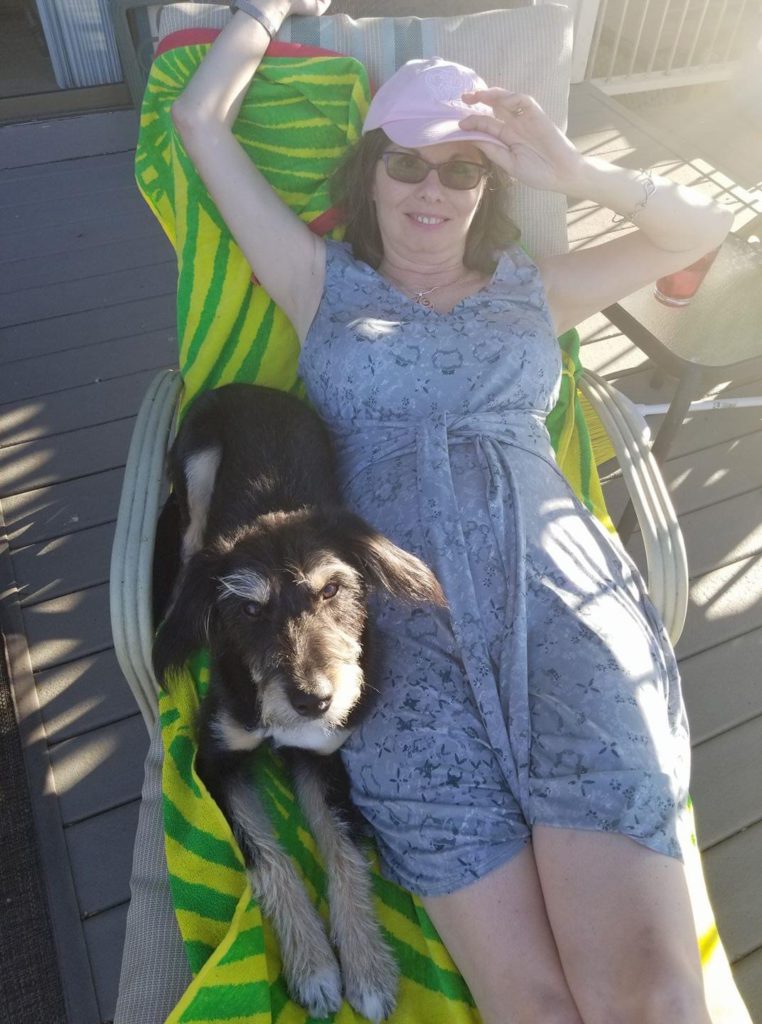
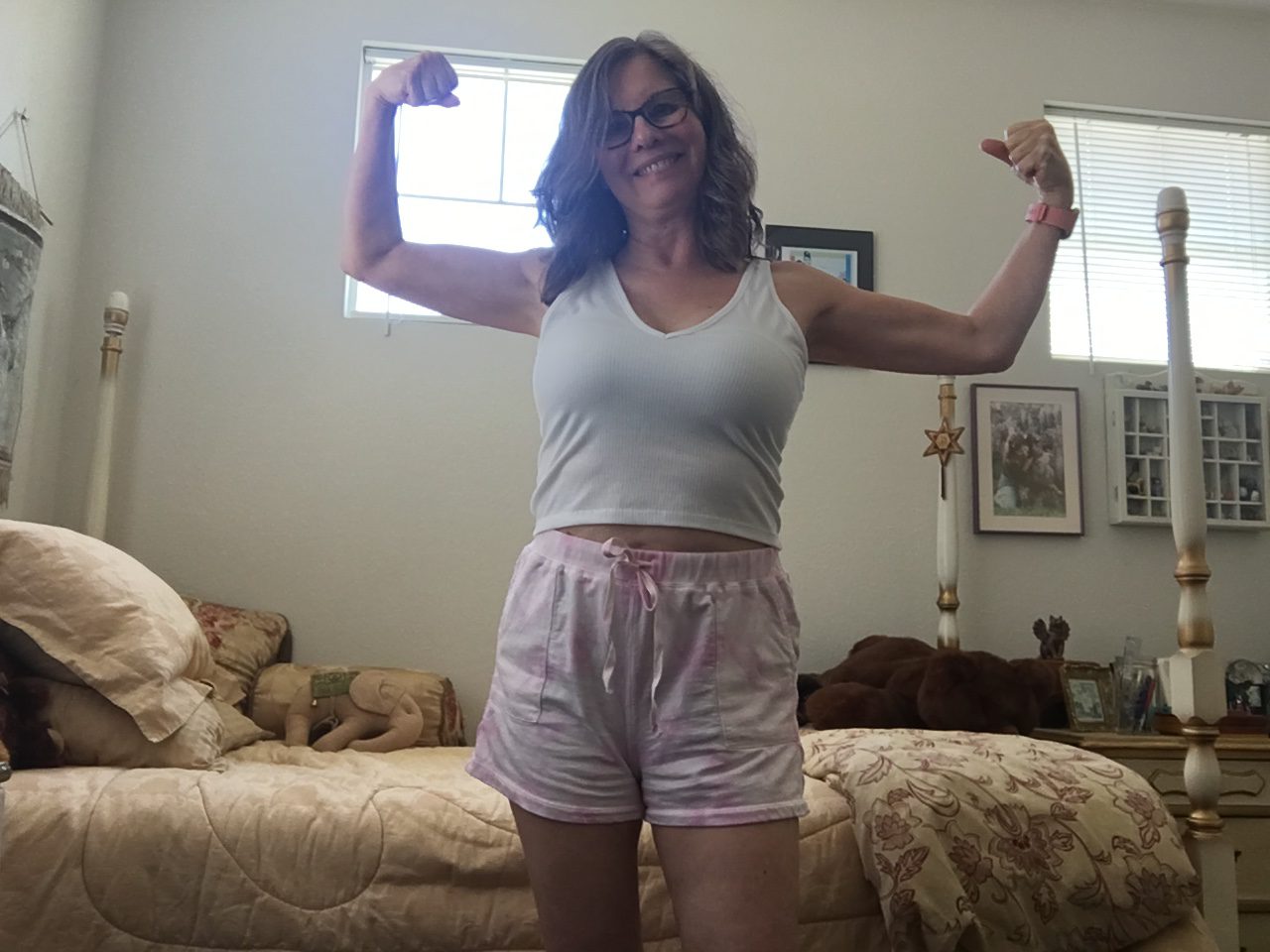
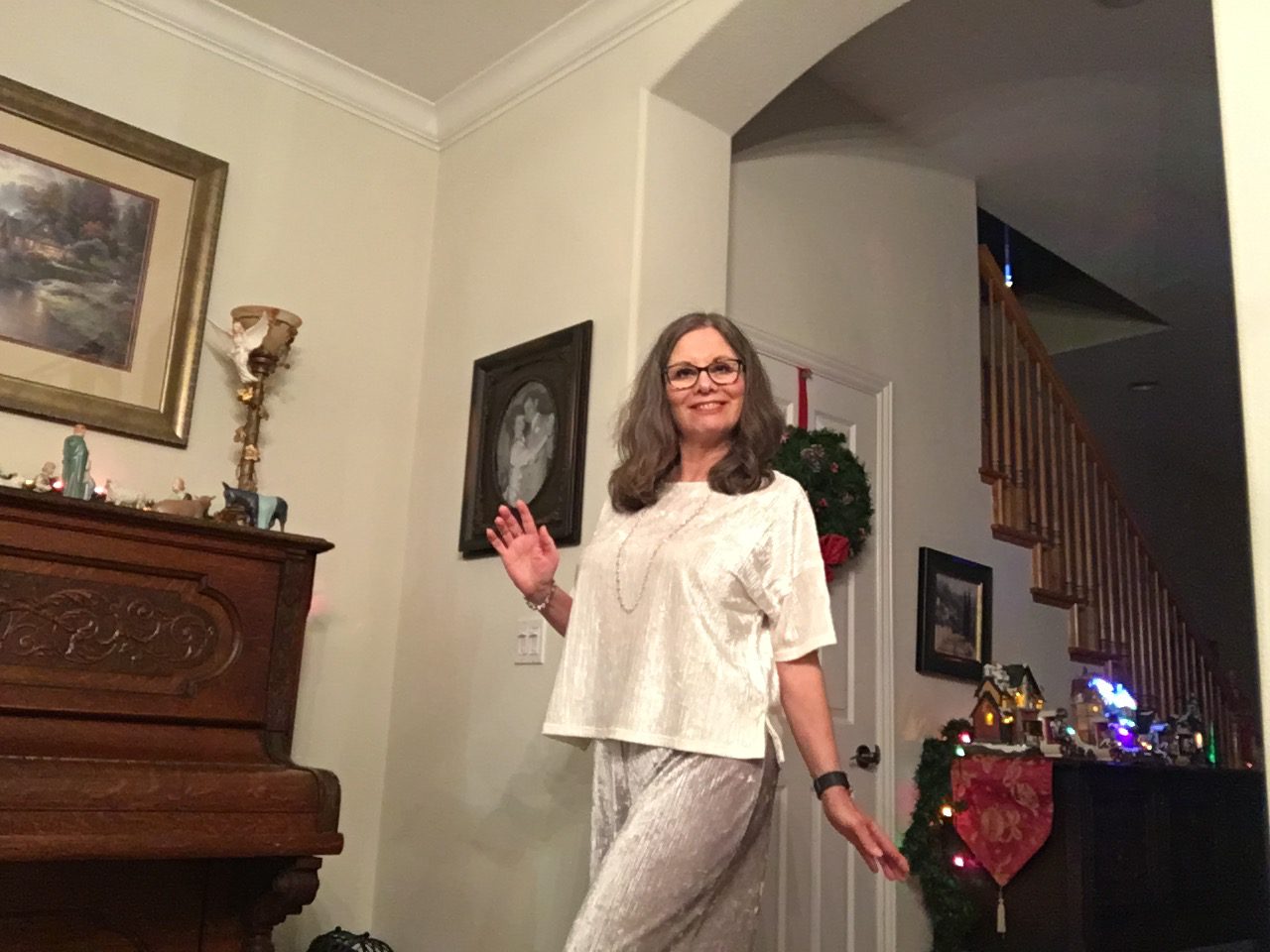
Continuing to monitor
I’m just on a monitor situation. I saw a regular eye doctor recently for new glasses, and she said something that I really liked, too. [It] was, “Protect your good eye. Wear glasses when you’re gardening. If something starts coming at you, that gives you a little protection. Wear sunglasses in the sun. Wear a hat. Protect that good eye.”
CLL Treatment and Side Effects
Starting Treatment after Watch & Wait
Monthly IVIG infusions starting in December 2015
My oncologist brought it up because I started getting a lot of infections. After I had pneumonia, he said, “I want you to have IVIG.” A lot of people say it makes them feel better afterwards. I never noticed any difference in the way I felt. I know I didn’t feel great for about 2 days, I think because of the pre-meds, which are a Benadryl drip. You’re kind of high as a kite in the hospital the day you’re getting your infusion.
A lot of people sleep. I couldn’t really sleep, but I would just be lazy in my chair, looking at my iPad, watching some mindless TV program or something like that. It did help lessen the frequency of infections, although I did continue to have infections here and there. What really stopped infections for me was starting ibrutinib.
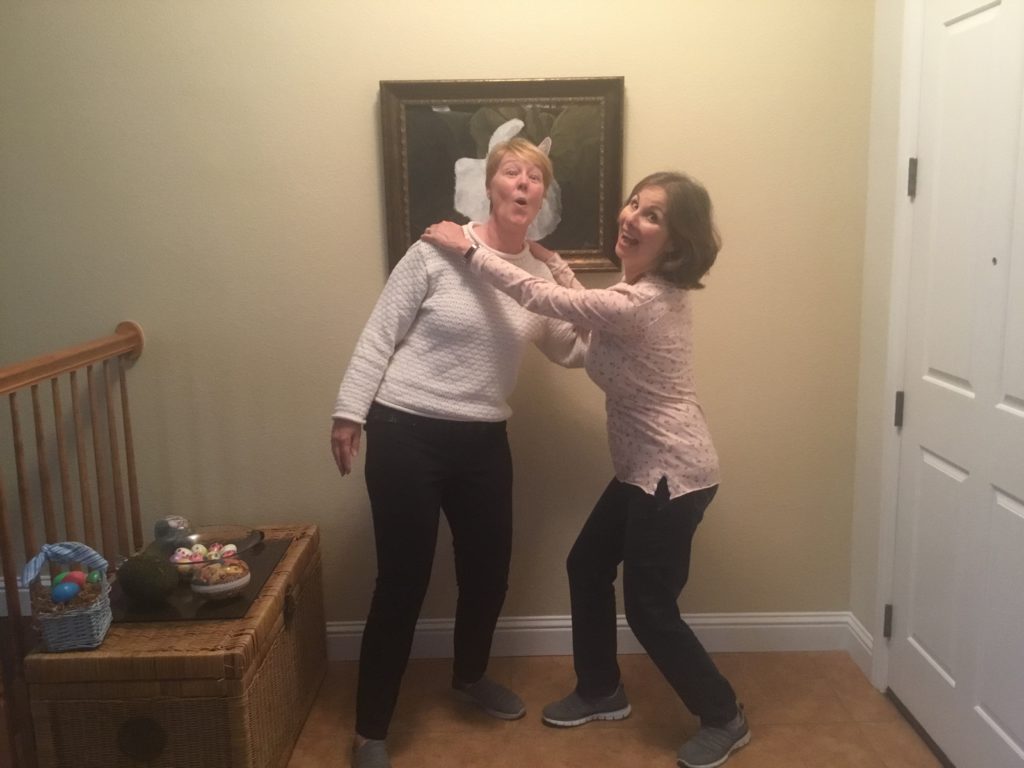
Deciding to start treatment for CLL
He was ready before I was. He had mentioned it, kind of like easing me into it. He definitely felt my hesitance to start any kind of treatment. I probably should have started it in the fall when he wanted me to, but it was definitely a shared decision.
I often wonder, “Would my eye issue not have happened if I had started?” But maybe it would have anyway. I do think that starting the ibrutinib probably helped my eye as well.
I just felt I’ve put this off as long as I can, and you just have to go with it now.

Discussing frequency, administration and side effects of treatment options
At that time, there were no clinical trials that Kaiser had. He had told me during my watch and wait that if a clinical trial became available, that was my best option. He would think that I should take that.
I didn’t know I was so sick until I started feeling better.
Fortunately, by the time I did need treatment, my options were chemo or ibrutinib. Kaiser does have a leukemia specialist. My doctor made an appointment with him for me, and he discussed treatment as well. He said, “You could do either, but being you’re unmutated, I would suggest you do ibrutinib because chemo doesn’t work as well for unmutated.”
When I had that discussion with my regular hematologist-oncologist, we went for the ibrutinib. I was just ready. I knew I had put it off far too long, and I had several months there at the end to just prepare. This is what I’m doing. It’s time.
Taking ibrutinib and side effects
It was 3 pills a day to start with. That’s the standard dose for everybody. After 8 months, my dose was reduced to 2 capsules a day. It was some years back, but what I remember of that time, I felt very tired.
One of the things that started happening within about 2 weeks — it seemed like it was a couple of days, but I think it was a couple of weeks — I started getting joint pain and swelling, and that is one of the major side effects.
During that initial beginning time while my body was adjusting, sometimes I would be freezing cold, and I always run hot. I was just freezing cold and could not warm up.
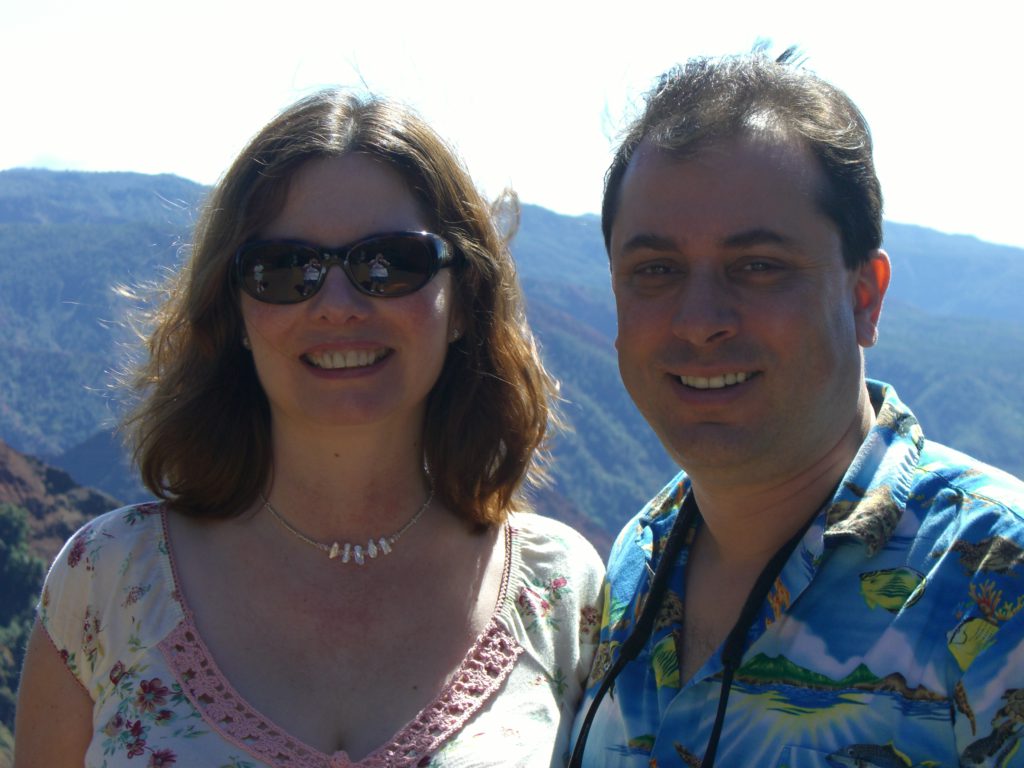
I remember putting on a really warm jacket and going in my backyard on a sunny day. I was just laying on this lounger and [enjoying] how good the sun felt, just warming me up with that warm jacket. I would get those chill spells a few times, and then that eventually went away. I would say about the first month or two was when my body was really adjusting to it.
Right away, my labs shot through the roof in the beginning, but they started coming down so quickly. It really started working very quickly, and all those bad things started going away. I had developed migraines in the months before treatment that I never had in my life. They went away.
That flu feeling that I would get about every 3 months for 2 days, that only happened maybe once a year or not at all. All those kinds of things went away really quickly after starting treatment. I’ve only had one infection since starting treatment, and it was within the first month.
»MORE: Read more about ibrutinib and other patient experiences
What was it like to see the treatment working?
That was definitely the time when I said, “I didn’t know I was so sick until I started feeling better.” Although the side effects did kick in very quickly, everything else went away. The side effect kicked in. In spite of that, I still felt better.
Treatment Side Effects
Treatment side effects and low-purine diet
The reason it causes joint pain, as I understand it, is because your body is sloughing off the cancer cells. It raises your purine levels. They call it gout. I’m not sure if it was gout or if it was just joint pain, but I followed a low-purine diet that did not seem to do any good. But I did that for all those years.
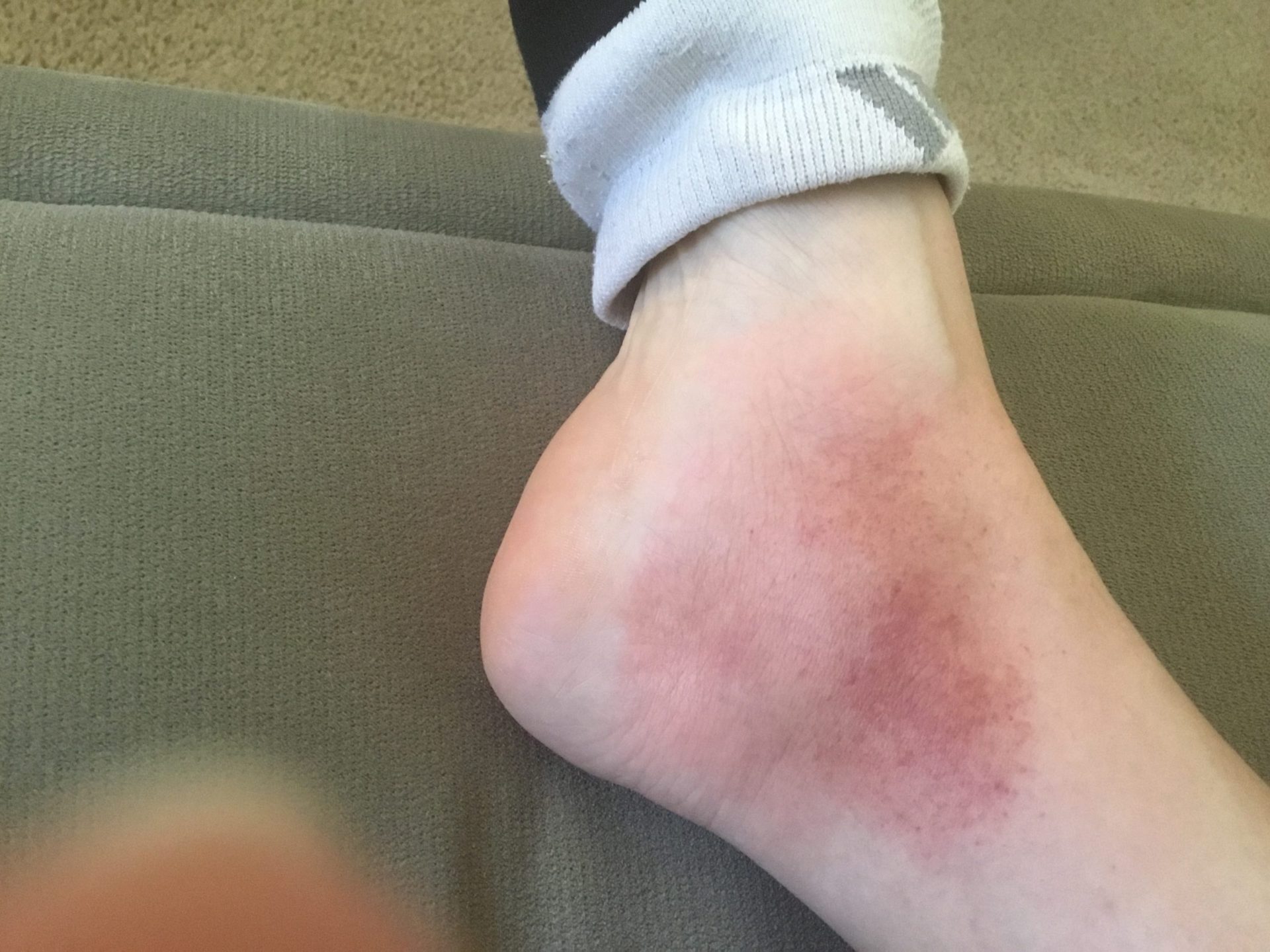
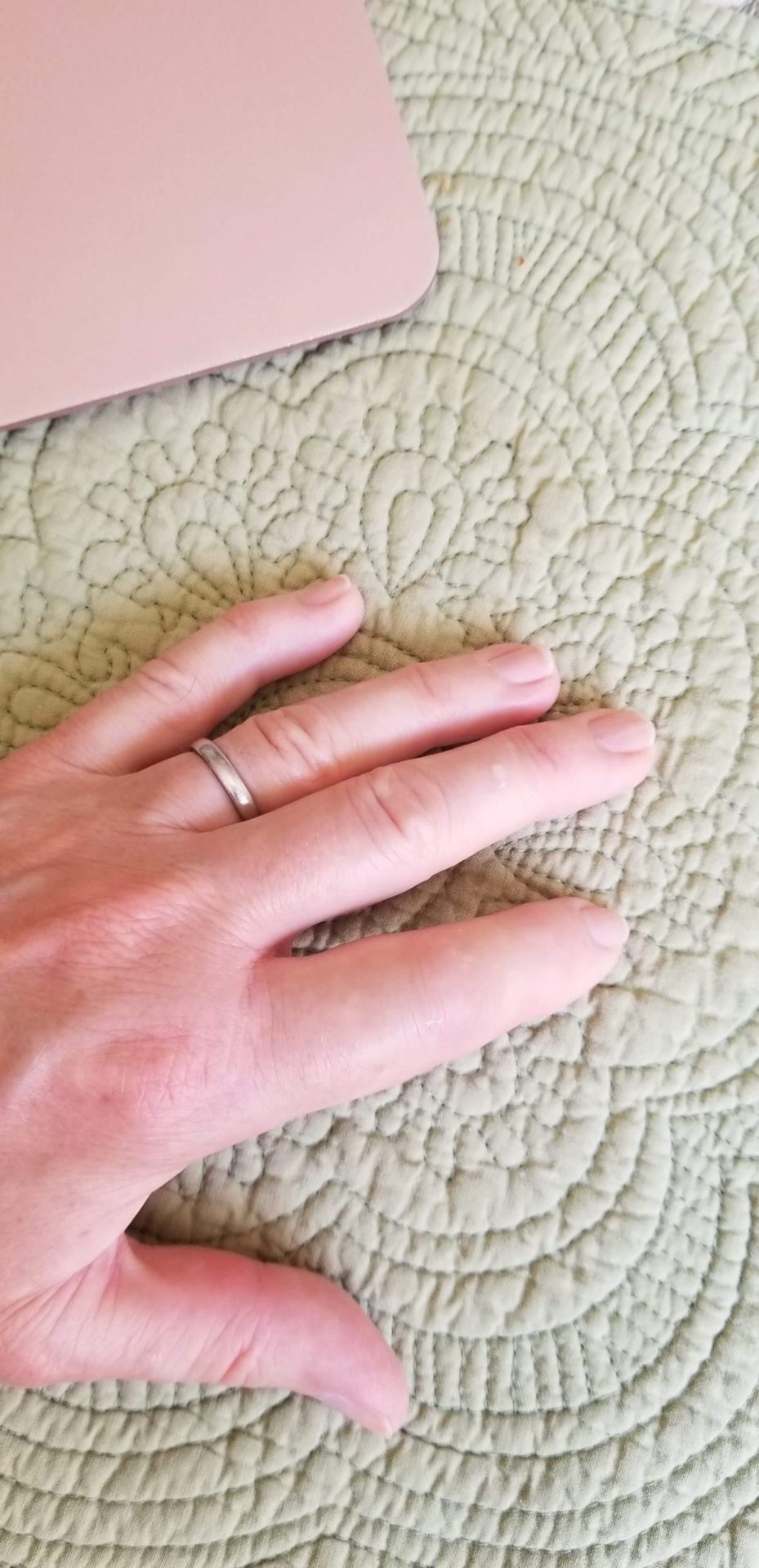
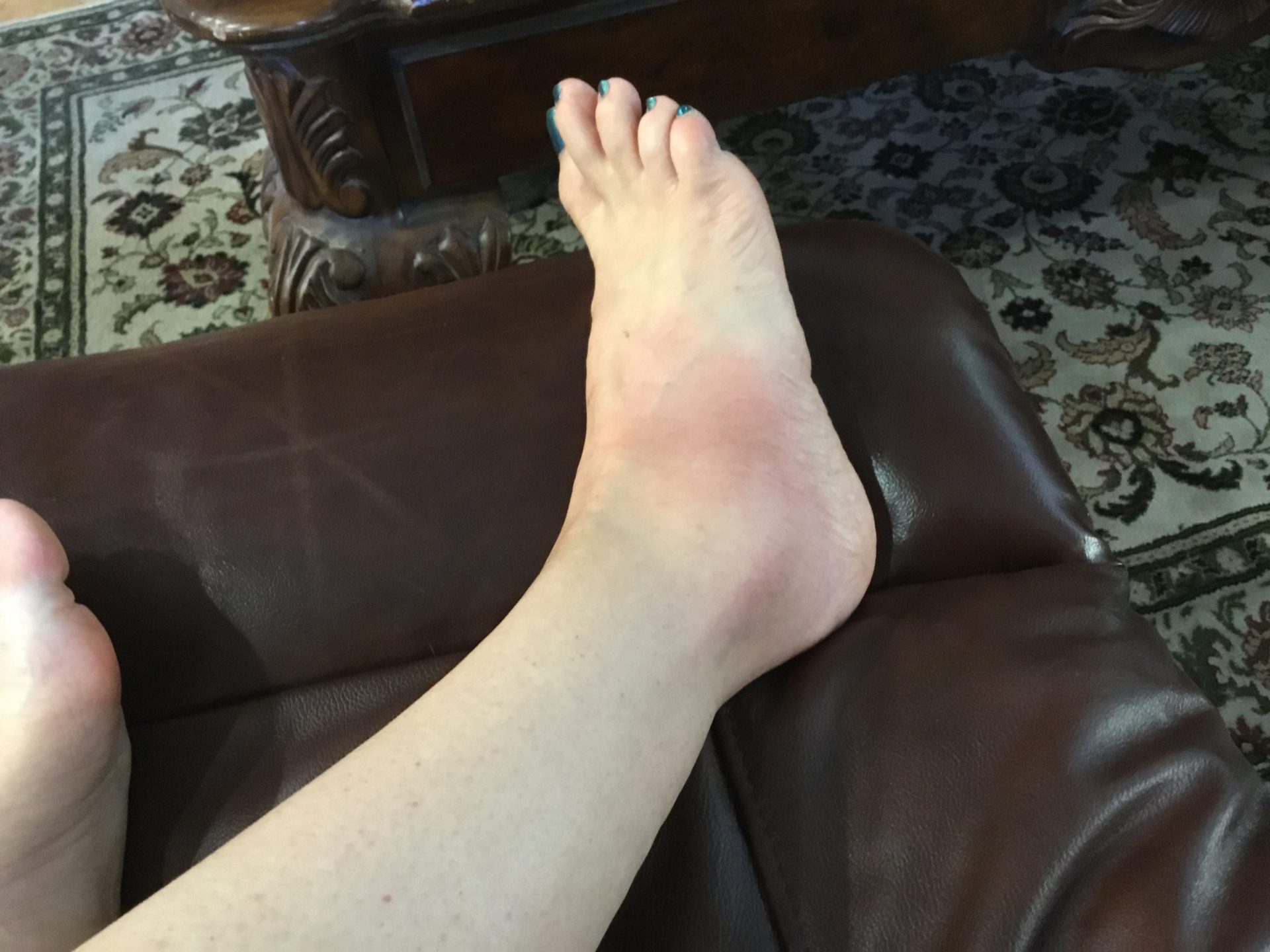
No red meat. Mushrooms are supposed to be bad. Beer’s horrible, which was fine. I don’t really care about beer, but once I could have a beer again, I’m like, “I think I want to have a beer just because I can.”
Turkey is very high in purines. I tried to follow it. Mostly the red meat, turkey, that kind of thing. I don’t think it helped me at all. There’s also drugs you could take — I did not — for gout as a preventative, so people do that. It probably helps them.
»MORE: Cancer patients share their treatment side effects
Why did you decide not to take the gout medicine?
When I first started ibrutinib, I asked my oncologist. I had seen that in a support group that a lot of people started Allopurinol (or something like that) along with it. I asked him about it, and he said, “I can prescribe that if you want.”
I said, “Yeah, I don’t want that pain.” I started taking both at the same time, and I started getting the little red bumps — Rickettsia.
My doctor said, “It could be from Allopurinol or the Imbruvica. We don’t know, so why don’t you stop the Allopurinol? If it goes away, then we’ll know that’s what it was.” That’s why I stopped it. It went away. It wasn’t a big deal to me, but I just never went back on it. It has side effects, too. I try to be on the least possible [dose]. I just never doubled back because I was afraid of the side effects from that.
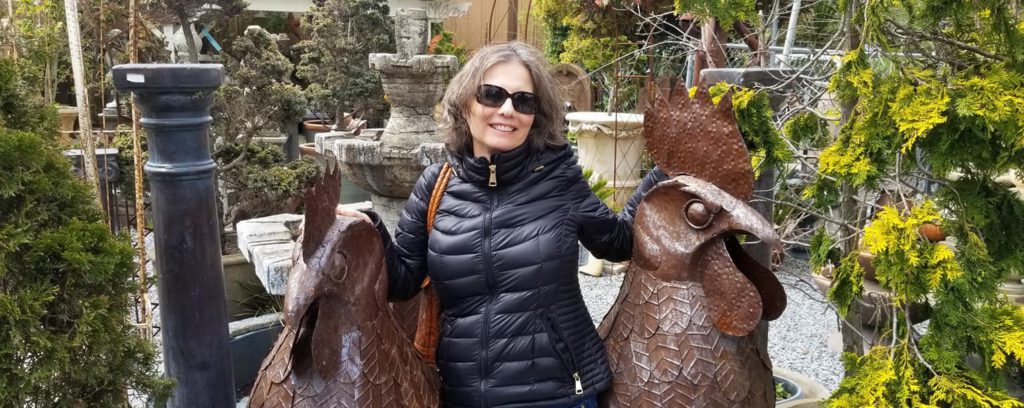
What worked for side effects?
Next thing, and the next thing. Pretty soon, on top of ibrutinib, you’re going to be taking 5 other pills. I just chose not to. What did help me? Hot baths. If it was just a hand, soaking my hand or a finger or wrist in a tub of super hot water and Epsom salts. That was really helpful. I tried every cream under the sun: CBD cream, arthritis cream. None of it worked.
What finally did help was taking steroids, but that did cause another issue that would need another medication. We finally decided that only on my horrible flares, where the pain had brought me to tears or that I couldn’t walk, that that’s when I would use the steroids. I only use them once a month to keep the other problem at bay and only take them for 3 days.
Did you or your doctor make the decision to go off ibrutinib?
It was his decision. I know that you can’t jump around with your treatment when you’re on a BTK inhibitor. You should kind of stay on that, because if you go to the next treatment, you could eventually run out of options.
I was like, “I can handle this. I’m a trooper.” Looking back, I don’t know how I put up with all the pain that I lived with and disruption to daily life — not being able to use my right hand for 2 days or my left hand or dress myself a couple of times. I don’t know how I lived with it so long, but I just thought, “I’ll just put up with it because I don’t want to run out of options.”
My oncologist suggested changing to zanubrutinib (Brukinsa). I think they were trying to transfer most of their CLL patients who were on that to the new drug. It had fewer side effects with afib and heart issues that are much higher with the first line of treatment, ibrutinib.
Again, I was hesitant to change, even though I had so much pain. He said, “You don’t have to if you don’t want to, but I think you should try it.” So I did, and 2 days after starting, my joint pain went away. I’ve never had joint pain again.
Did Kaiser take care of the insurance and financial side of things?
Note: zanubrutinib was not FDA-approved for CLL treatment when Leesa started it.
It was their idea, and I believe that it is a less expensive medication. Cost-wise for them, I think that was one of the main reasons. The 2 reasons: it’s more cost effective for them, and there are fewer issues with the heart.

Zanubrutinib side effects
I thought that zanubrutinib was my miracle drug, and it was great. I really could forget that I had CLL most of the time, so it was great. Then in March, I started developing GI issues, which is another side effect of this drug. It isn’t really common to develop them months after starting, but that’s when it happened for me.
I wasn’t managing it well for about a month. I was trying to take Pepto and Imodium. I had my regular monthly labs, and my sodium was rather dangerously low. A couple of hours after I did my labs, I got a call from my oncologist’s office asking me a lot of questions. I was told at that time to hold the zanubrutinib. “Drink Pedialyte, Gatorade. Let’s work on the sodium.”

Going to the ER for side effects
I just felt awful. It was bad enough that it drove me to the ER. I had a headache and was really fatigued, like I had the flu. Just the flu-like symptoms. We never could pinpoint exactly what happened, but some people have talked about a withdrawal. I have been on a BTK inhibitor for many years, so I’m thinking that’s why my liver enzymes shot through the roof rapidly.
I had to go have labs every day. I’m really fortunate that there is a clinic 4 miles from my home, and I go there frequently. My husband could see how sick I was, and he said, “Do you want me to drive you?” He drove me down the hill to the clinic. He could see how sick I was.
I ended up being off of zanubrutinib about 3 weeks, and then I started feeling better. I guess my body had adjusted to whatever I was going through. Then I went back on, and now I am managing the GI issues really well with medication. I take 2 Imodium a day with my Brukinsa. They go hand in hand. They’re in my little pillbox together.
Dealing with diarrhea
If I was making a lunch date with you, I tell all my friends this, “Let’s confirm in the morning because I don’t know how I’m going to be.” They are all so sweet and understanding. I don’t have anybody who says, “Well, how can you not know? You felt good last night.” No, my health can change on a dime. They understand that.
It has made it scary to leave the house, because I don’t know how my body’s going to be acting that day, especially in March before I really had a handle on things. Now, right now, I have a really good handle on it. Those fears have gone away, but that was really difficult. It was a difficult time.
Figuring out how to manage side effects and live life
I was just taking one a day, again, kind of fearful of drugs and so afraid I was going to flip and go the opposite. But the next day I wouldn’t, and the next day I wouldn’t. I should have just stepped up to 2 a day then.
It was a conversation with my oncologist after the sodium level and the whole fiasco with my health, that he said, “Take 2 a day. Take as much as you need.” Once I did, that fixed it. A little adjustment in the first week or so, but then it just seems like my body is in a good rhythm right now.
I actually kept a log. Thankfully, I don’t need to do that anymore. I’m like, “I took 2 today, and this is what happened or didn’t happen.” It was pretty quick. Once I started taking 2 a day, I would say within a week and a half, I was back on track.
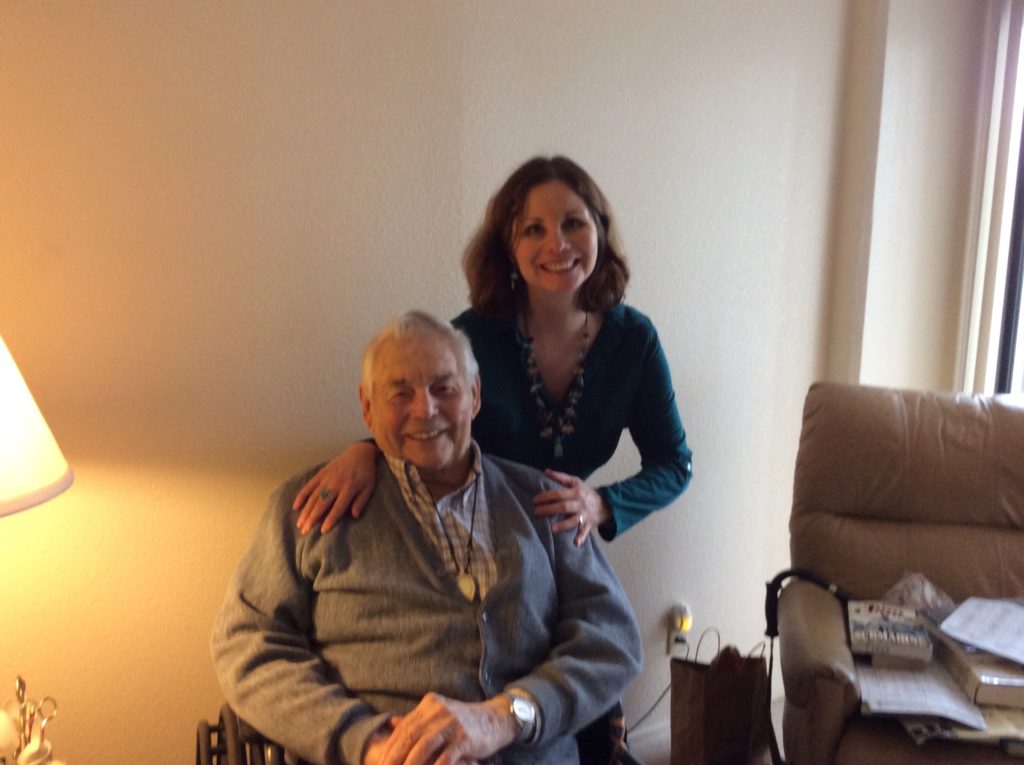
Reflections
The importance of a good relationship with your doctor and their knowledge of CLL
I hear and see that every day in the support group online. I understand that there are probably way too many oncologists that are not familiar with CLL.
I’m really fortunate — maybe it’s because I live in a large metropolitan area — that my doctor is very familiar. Sure, he probably doesn’t know as much as a CLL specialist, but he’s not in the dark. He’s updated on all the current information, and I’ve always felt like he’s a great partner.



I don’t feel like he’s forcing me to do one thing or another. It’s a conversation. “This is what’s happening. Here are your options. How do you feel?” He’s great at answering every question I’ve ever had.
When I send him an email, I don’t think he’s ever taken longer than 3 hours to get back to me. I have to be careful not to have this question on a weekend that’s not really pressing. I’m like, “I don’t want to bother him on this weekend, because I know he’ll look at it and answer me. I don’t have to know right now.”
The beautiful thing about the Kaiser system is that all of my doctors that I see have access to all of my labs and can see everything going on. Everybody’s on the same page, and they work together pretty well.

What do clinical trials and research mean to you?
It’s huge. I feel like I wouldn’t be here if it weren’t for ibrutinib. I just know that. If there was a clinical trial available, I would jump on it in a heartbeat. It really is the best.
Don’t waste one more precious day of life dwelling on the negative. Try to learn all that you can about it without dwelling on it all day long. Have fun, learn what you can, and just enjoy life.
In 2008, when I was first diagnosed,my doctor said, “You don’t need any treatment now, but I would highly suggest a clinical trial.” I’m like, “What’s that? I don’t want to be a guinea pig.” Absolutely, it is the best thing. Fortunately for me, ibrutinib was available.
»MORE: Read more on FDA approvals of clinical trials
After 14 years of successfully living with CLL, what message do you have for other people?
Absolutely the hardest part is wrapping your mind around your diagnosis in the beginning. I like to tell newcomers, “Of course you’re going to feel like this, but do your best to push through as soon as you can.”
Don’t waste one more precious day of life dwelling on the negative. Try to learn all that you can about it without dwelling on it all day long. Have fun, learn what you can, and just enjoy life.
»MORE: Join other patients and caregivers on The Patient Story social media community
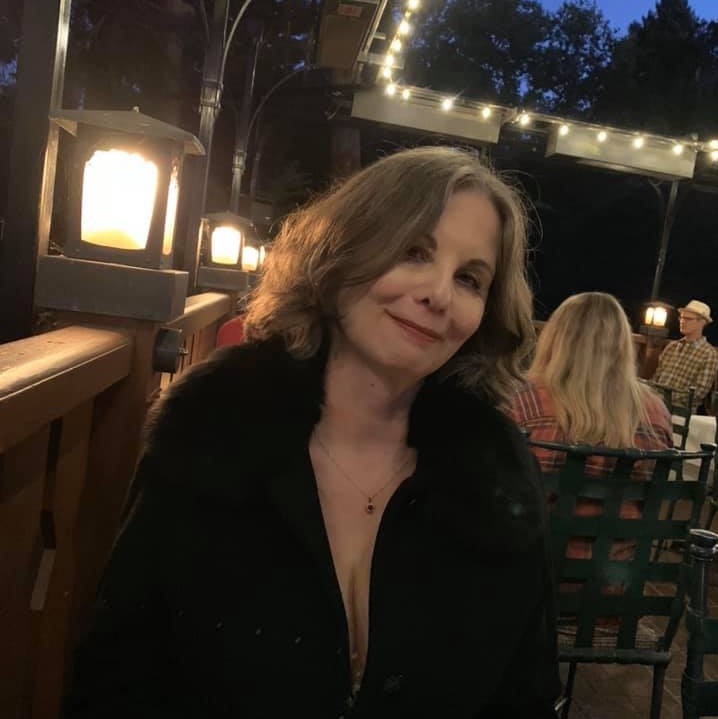
Inspired by Leesa's story?
Share your story, too!
More CLL Stories
Susan K.
Symptoms: Swollen lymph nodes on the neck, high white blood count
Treatment: Venetoclax & obinutuzumab
Michele N.
1st Symptoms: Slow healing, scalp infection, enlarged lymph nodes
Treatment: Clinical trial of ibrutinib, fludarabine, chlorambucil and rituximab; acalabrutinib
Tamsin W.
1st symptoms: Out of breath, dizzy, nauseated, tiredness, palpitations
Treatment: Obinutuzumab & venetoclax
Bill M.
1st symptoms: Tightness, lumps in left side of neck, severe pain in left shoulder, enlarged spleen
Treatment (CLL): 6 cycles of EPOCH, clinical trial for DuoHexabody-CD37
Stephen B.
1st symptoms: difficulty swallowing and fatigue
Treatment: Rituxan, Bendamustine, targeted therapy BTK inhibitor (ibrutinib)
Sean R.
1st symptoms: No apparent symptoms; went to ER for unrelated shoulder pain
Treatment: Clinical trial, Ibrutinib & Venetoclax
Tony D.
1st Symptoms: Lump in back of neck that got bigger in a couple weeks
Treatment: Targeted therapy - orall pill (Imbruvica), takes 3 pills a night
